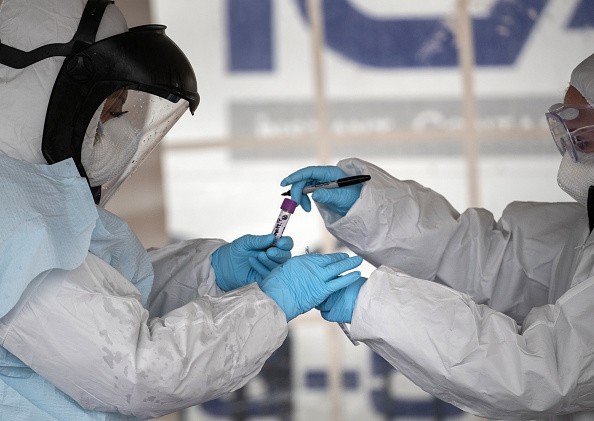COVID-19 was long thought to be left in the rearview mirror as people drove forward to normality, back to when everyone can walk around without masks and fear, but that is not exactly the case now. An Omicron subvariant called "XBB.1.5" caused another surge during the start of the new year, with a 40.5 percent rise in hospitalizations in the country.
Whether we like it or not, COVID-19 is here to stay, and it is a disease that is still something people should be wary of and protect themselves from, as it is not yet over.
COVID's New Omicron Subvariant Causes Surge in the US

According to the Center for Disease Control and Prevention (CDC), there is a current surge in coronavirus cases, and it centers on the latest Omicron subvariant that made its way to the country.
In the country, there is a 40.5 percent rise due to the Omicron subvariant alone, driving hospitalization due to the disease at a massive high this 2023.
Ars Technica reported that these results are from backlogs of reviewing positive cases nationwide, as there are fewer testing centers available for the public to use.
These findings may still jump to higher rates in the coming days or weeks, but this does not mean people should be lax about the still-growing threat and persistence of COVID.
Read Also : COVID-19 Mutations Found in NYC Rats; Can These Rodents Infect Humans? Officials Share Concerns
Should People Still Wear Masks and Vaccinate?
And while wearing face masks is no longer mandatory, people should consider using them, especially in areas with a massive volume of people, as well as indoor or enclosed locations.
Moreover, vaccinations should still be a priority to protect against the drastic effects of the coronavirus, focusing on the regularly-updated booster shots for those with previous records.
COVID-19 and its Effects
Late 2019 introduced the world to the SARS-CoV2 virus, which was later dubbed nCOV-19, and finally settling in on COVID-19. The world did not go on lockdown until late Q1 of 2020, and what was supposed to be only weeks of staying at home, turned into several months and years for some.
To date, COVID-19 is still one of the most dangerous modern viruses to arrive, as sometimes, detection is confusing to the common flu, having similar symptoms and signs.
Many companies worked rapidly to develop certain vaccines to combat COVID-19, with the likes of Pfizer and BioNTech, as well as Moderna's mRNA-based shots.
Moreover, there were medications and cures that were developed by researchers to help those afflicted with the disease.
In this age, the top prevention for COVID-19 is to be responsible for one's health and be vigilant, especially in going out. A clean hygiene is also a good way to avoid the virus, and proper social distancing measures should still be observed.
The world has come so far to significantly reduce and fight against the virus, but this new year is facing another surge threatening the public's health.

ⓒ 2025 TECHTIMES.com All rights reserved. Do not reproduce without permission.




